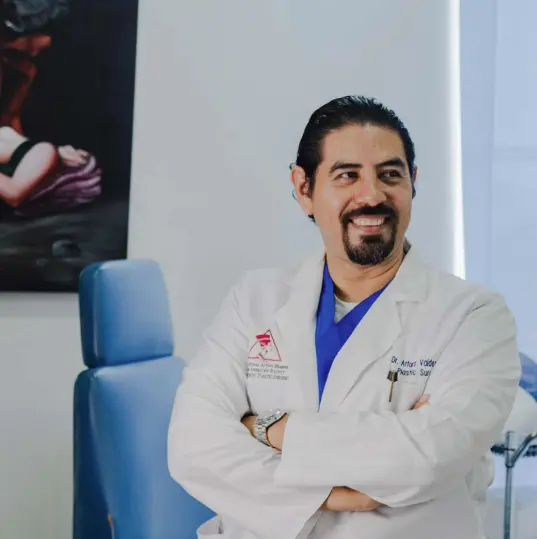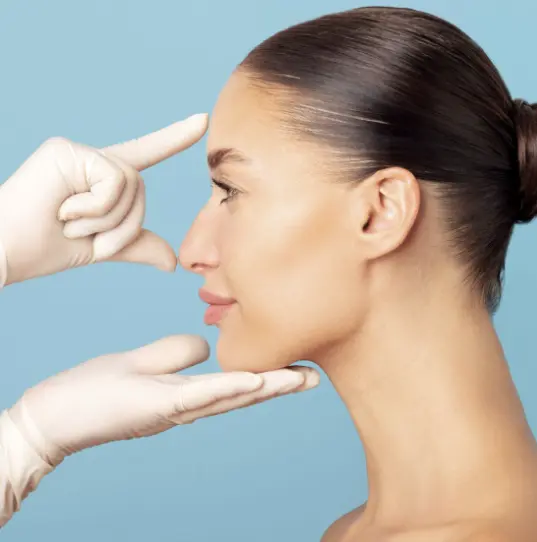Considering a nose that perfectly balances your facial features and allows for clear breathing? For transformative results, consider Rhinoplasty in Cancun with Dr. Arturo Valdez. This procedure, commonly known as a nose job, is a highly individualized surgical procedure designed to enhance facial harmony and the proportions of your nose. Beyond aesthetics, it can also correct impaired breathing caused by structural defects within the nose. Dr. Arturo Valdez, a board-certified plastic surgeon and specialist in ultrasonic rhinoplasty, performs this intricate procedure safely and with exceptional precision and an artistic eye.
Rhinoplasty in Cancun: Enhancing Facial Harmony and Breathing

What is a Rhinoplasty?
Rhinoplasty, commonly known as a “nose job,” is a surgical procedure that reshapes the nose to enhance its appearance and bring it into better proportion with other facial features. It can also correct structural problems within the nose to improve breathing.

Begin Your Transformation
Dr. Valdez’s team guides international patients (US/Canada) for a seamless journey to recovery.
Am I a Good Candidate for Rhinoplasty in Cancun?
Considering Rhinoplasty in Cancun?
Dr. Valdez’s team guides international patients (US/Canada) for a seamless journey to recovery.
Rhinoplasty Procedure: What to Expect
Frequently Asked Questions
Incisions are strategically placed either inside the nostrils or discreetly across the columella, designed to be very well hidden and typically fade significantly over time.
Yes, the structural changes made during rhinoplasty are permanent, though the nose will continue to age naturally with the rest of your face.
Absolutely; rhinoplasty is often combined with other facial surgeries like a facelift, blepharoplasty (eyelid surgery), or chin augmentation for comprehensive facial harmony.
The procedure is performed under local anesthesia with IV sedation, so you will not feel pain during the surgery; discomfort after is typically mild and managed with medication.
Initial recovery, with splint removal and most swelling subsiding, typically takes about 1-2 weeks, though minor swelling can persist for several months as final results emerge.
Schedule your consult now!
Schedule a virtual consultation with Dr. Valdez
Why Choose Dr. Valdez for Rhinoplasty in Cancun?
Dr. Valdez is the preferred surgeon for world-class nose reshaping, drawing patients from Cancun, the US, and Canada to experience exceptional care and the unique benefits of our beautiful city.
Dr. Valdez: Expert Nasal Refinement
- Precision Craftsmanship: Advanced techniques to achieve a balanced, natural-looking nose that complements your face.
- Harmonious Contours: Meticulous attention to detail for refined proportions and improved facial symmetry.
- Confident Results: Discover an exceptionally natural appearance that enhances your overall aesthetic.
The Cancun Advantage
- Cost-Effective Excellence: Access premier rhinoplasty with notable financial advantages.
- Serene Recovery: Recuperate peacefully in a stunning, easily accessible destination.
- Dedicated Support: Comprehensive assistance for international patients. Explore our Travel Guide.

